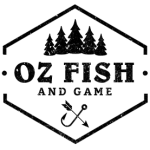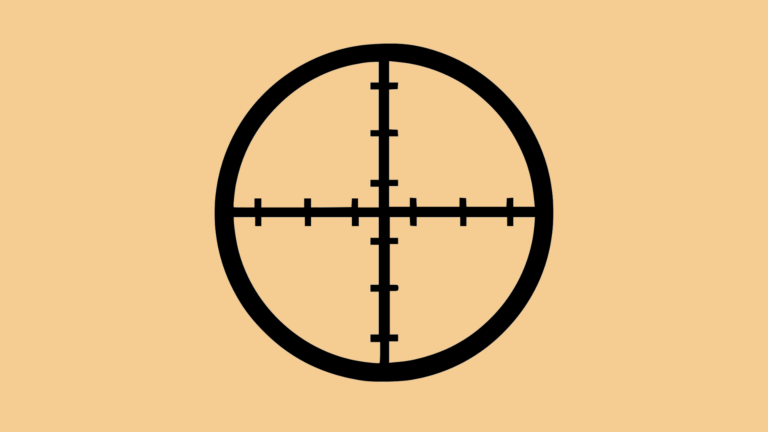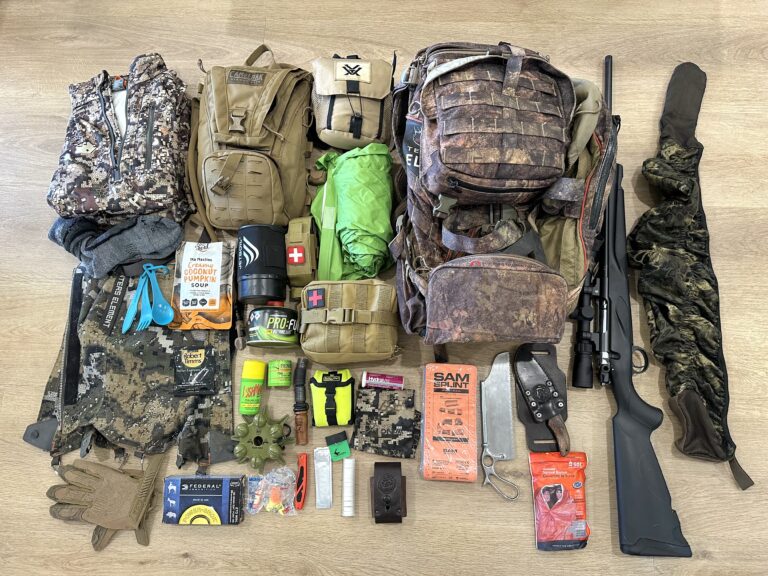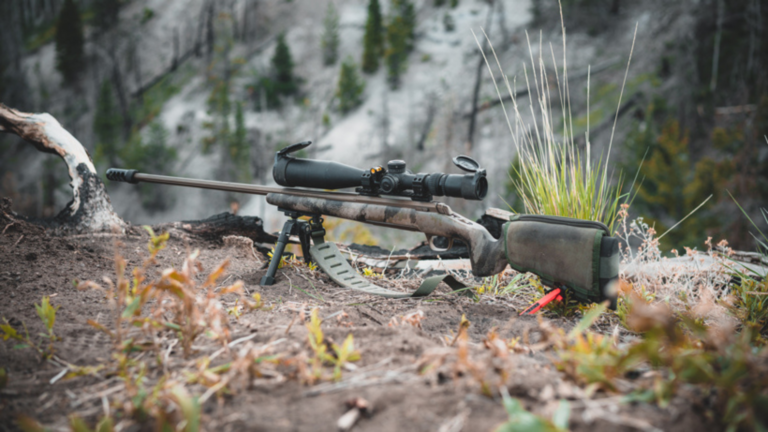“For real thrills and the most exciting trophies, I hunt the way the Indians did, with a bow and arrow.
This was the supreme moment. You can hunt all your life with a bow and arrow, but you’re never really prepared to face the greatest of all wild game. I had come all the way from Grayling, Michigan, to Mozambique in Portuguese East Africa and I was finally nocking the arrow for the big one.
Four tons of bull elephant started moving out across the clearing about 40 yards away. I stepped from behind my cover; the bull turned to look at me. I sighted and let it fly. It was a killing shot, but the elephant ran. For a moment I thought I might have misjudged the power of the bow, and we would have to track the wounded elephant with rifles. But then, before he was out of sight, he dropped to his knees, then crashed to the ground.
A perfect trophy with a single arrow. I was proud of that shot because I had proven once again that no matter the size of the game, without question you can bag it with a bow.
I had always dreamed of going after big game and I had been lucky enough to sight an arrow on record-size grizzly, tiger, and wild boar. But after hunting all over the world, I’ve learned that the most challenging game for a bow hunter is right at home – it’s the elusive whitetail deer.
If you can stalk and bring down an old buck, you can hunt anything with skill. It takes dedication to develop skill as a bow hunter, but if you’re willing to practice you’ll learn – and enjoy a satisfying, exciting sport at the same time.
Select a bow you can handle easily. For the novice, the best guide is to buy a bow that you can hold at full draw for 10 seconds. Archery muscles will develop quickly so a slight tremor is alright. If you shake, however, the bow is too heavy. Practice a half hour a day for about two weeks and you’ll be able to handle it with ease. A bow weight of about 35 pounds draw weight is about right for the average man.
Match you arrow to your bow weight. If properly matched, the arrow snakes around the bow when it is shot. Stiffness or spine is a factor is this fitting. Arrows are graded as to the size of the bow.
To determine your proper arrow length, place a yardstick again your chest between your arms. Extend the arms horizontally along the yardstick and note the distance to the ends of your fingers. This is your correct arrow length.
As you become more proficient, the hunting instinct will come to the fore. This usually means selecting a heavier bow. Men should use at least a 45-pound bow for hunting big game. This means extra practice, but the physique to handle this weight can be developed easily. You can shoot a 40-pound bow for years and not be able to handle a 50-pounder. The muscles must be developed by shooting a heavier bow.
Once you have a bow of the proper hunting weight, begin practicing each day. Shoot until you can hold the bow at full draw no longer. Each day you practice, note that you will be able to shoot a few more arrows. Keep at it.
Perseverance will enable you to easily handle this heavier bow. You may then want to develop your muscles to still heavier bows. The average hunting bow is 50 to 55 pounds draw weight. This is the weight that should be used for game the size of deer. For larger game such as moose, a weight of 60 to 65 pounds is recommended.
In building your muscles to heavier bow weights, care must be taken to avoid becoming a “snapshooter”. This affliction is one that creeps upon you when shooting heavier bows. Muscles are built up by breaking them down. This is the progressive weight-lifting process.
Shoot only until your muscles are tired and then do not shoot again for 24 hours. If you continue to try to shoot beyond this tiring period you will find yourself not coming to full draw and well on your way to becoming a snapshooter. A snapshooter is one that cannot come to full draw. He loses the arrow before drawing it to full length. It is not likely that he will ever become a good shot.
Stalking your quarry
Stalking is an art many of our younger hunters know little about. With the scope-sighted rifles, the hunter doesn’t have to get as close as he previously did. Modern day archers, many of whom once carried a rifle, have to re-educate themselves in the ways of hunting. For the average bow-hunter, 35 yards is about the limit for accurate shooting. It boils down to this – if the archer wishes to be consistently successful, he must either sit on his duff in a blind and wait ’em out, or he must learn how to stalk.
Almost every animal has some defect in his makeup which may be turned to the hunter’s advantage. I have learned that anyone who can successfully stalk whitetail deer can be successful on any other big game animal. So further observations will be more-or-less directed toward outwitting this clever species.
The object of stalking is to get as close to the animal as possible before shooting. You’ve got to think like a deer in order to get close to him. A whitetail is trained from birth to hide, camouflage, and creep away from noise and scent. Yet he has courage enough to lie motionless and let a hunter pass by him if he thinks he can escape detection. Deer have three principal faculties for detecting the presence of their enemies – nose, eyes, and ears. The sense of smell is by far the most important to the bow-hunter. Second is the amazing visual faculty for detecting objects in motion. These two, combined with a well developed sense of hearing, establish a protective screen about deer that extends well beyond the reasonable range and is difficult to penetrate.

The bow and arrow as a hunting weapon has three weaknesses. Most important is the short range of the weapon which makes it necessary to approach well within the protective screen of the deer to obtain a reasonable shot. Second is the exposed position necessary to make a successful shot plus the fact that it is necessary to create considerable motion while shooting. Finally, the “twang” of the bowstring travels faster than the arrow and affords the deer time to move if he recognizes danger in the sound.
In stalking deer with the bow, the natural instincts of the deer and the inherent weaknesses of the bow create a chain of never-ending problems. The still hunter or stalker must locate undisturbed deer, penetrate their natural instinctive barriers, and, at close range and sometimes in plain view, make considerable movement without being seen and heard. Impossible? No, it can be done by those who will take the time to learn the ancient art of stalking.
A smart hunter begins planning his hunt before the season opens. He visits the intended hunting area, looking for deer trails linking feeding areas, drinking places, shelter areas, and bedding spots. Research on the favourite foods and cover is also a prerequisite.
Go into your hunting grounds against the wind if you can. Remember that air flows up the slopes when it is warm and into the low places during the cool hours. Since the best times for stalking are in early mornings and late afternoons (when game itself is on the move) stick to high ground most of the time. Always move against or quartering into the wind. Rarely can deer be approached downwind to within arrow range.
These important rules used by successful stalkers stand out:
- Never step on anything you can step over,
- Take three steps and stop, and;
- Train your eyes to see detail.
The first rule will aid in noiseless approach. The second gives you the advantage of seeing an animal before it sees you. The third allows you to spot the animal even in dense cover. Consistent success in stalking is absolutely dependant upon seeing the game before it sees you.
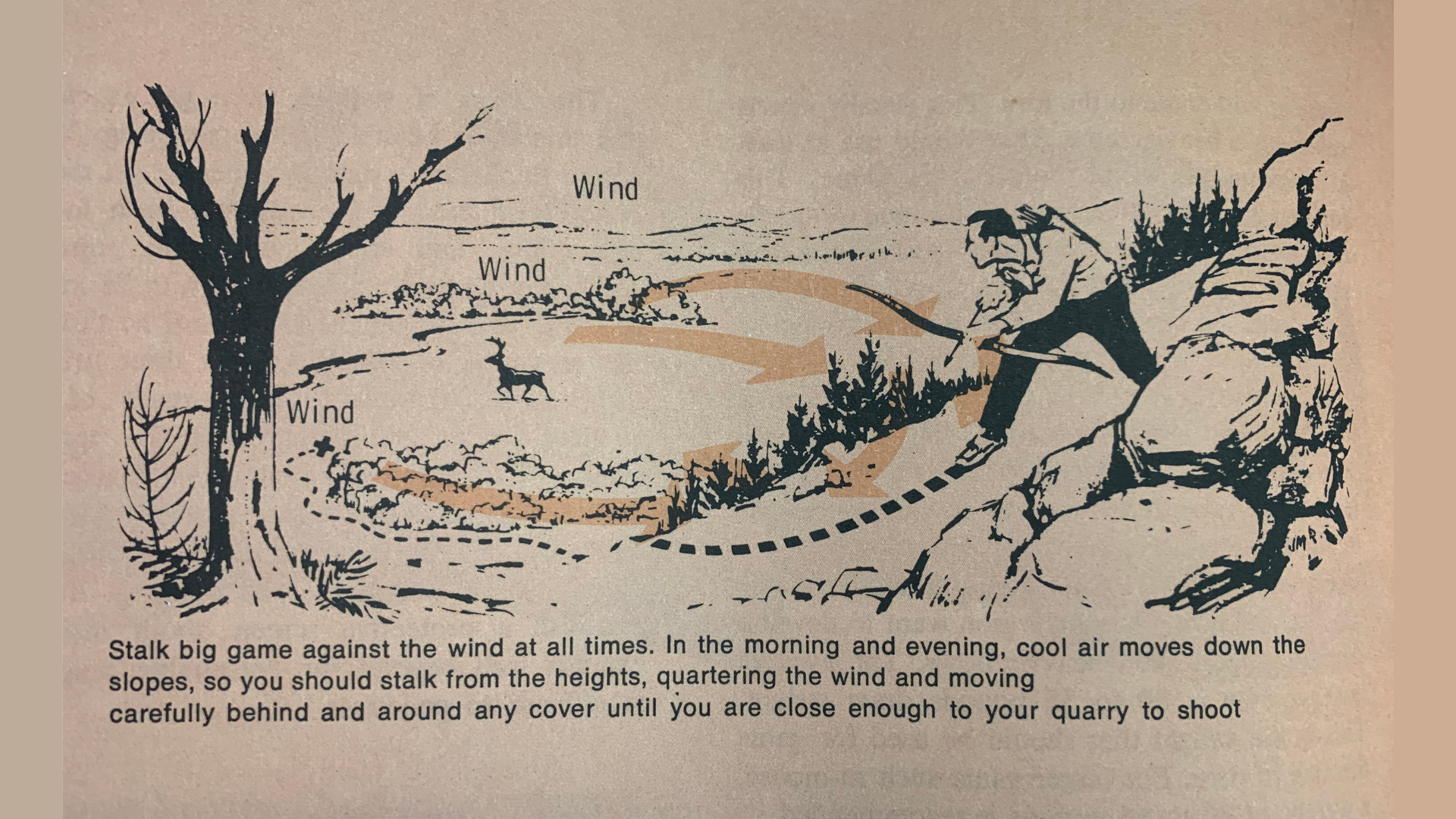
Don’t look in open spots for deer. Look at small openings between trees and through brush. Try to single out a part of the animal; maybe his ears, his head, legs or rump and don’t make the mistake of only watching ahead. Allow your eyes to rove back and forth, over every bit of cover. And don’t just look – SEE what you are looking at. Look for patches of colour out of place in their surroundings and be alert to any movements, no matter how small. A flick of an ear or a movement of the tail may focus your attention on a spot and suddenly the entire outline of the animal will take shape. Look back once in a while. Deer are crafty and sometimes hide as you walk by then sneak out behind you.
Thick brush may cause a stalker to make a wide detour or to give up the stalk entirely. Dry leaves, dry limbs or twigs, and gravel are murder. There are no shortcuts to a successful stalk. Once you lose sight of your quarry as you begin to stalk, you must always assume the animal is still there. The temptation to hurry must be curbed. Use the same timing as a feeding animal. If you move with a steady gait, any animal hearing you will at once become suspicious and alert. Seldom cover more than a mile in an hour, and a half mile is better. Never relax vigilance for a moment. Get down on hands and knees so you can see under tree limbs and take advantage of shorter and usually denser cover. A bowhunter, like a bobcat, should use every suitable particle of cover, no matter how scant. It helps break up that tell-tale silhouette.
Placement of the foot is one of the most important details in stalking. Short steps are favoured. Long steps can cause loss of balance if you have to “freeze” while taking a step. Moccasins or tennis shoes in dry weather and rubber-bottomed, leather-topped “swampers” for damp going are ideal for stalking. Trousers must be of soft material that will not rustle. Loose objects allowed to jingle in pockets are out. Extra equipment should be securely strapped to your body. A soft arrow plate on your bow and silencers on the bowstring are “musts”. A camouflage suit, or clothing of dull, neutral colours is a big help.
Don’t stay in camp during wet or stormy weather. Deer may often be seen calmly feeding during a downpour. Such days provide excellent opportunities for a silent approach because the deer has to rely chiefly on sight for protection and this is sometimes dimmed by raindrops on its eyelashes. I’ll never forget the rainy Sunday morning, when the water dripping off the trees into the leaves covered any slight noise of my progress, that I worked close enough to a slowly feeding deer to slap her on the rump with the end of my bow. Other stalks have culminated with kills but none gave me the pleasure that I felt that morning.
I have found the hour after dawn to be the best time of all for stalking deer. After feeding undisturbed most of the night, they are less wary and are on the move toward bedding grounds, feeding slowly as they go, keeping their heads down more than usual. Another trick to remember is that a feeding deer usually switches his tail before raising his head. So, if you are trying to close the gap on a feeding deer, watch his tail and “freeze” when it moves. Once a stalk is begun, always keep a close watch for another deer that might be standing unnoticed in the vicinity. I’ve lost several chances at deer because one I didn’t see warned the one I was after. If a deer has already discovered you before you are ready – but is within range for a shot – slowly and with as nearly imperceptible movements as possible, work yourself into a shooting position, draw, and shoot. If you don’t it is most probable that you won’t get a shot at that particular deer.
If you think that stalking sound like tough work, you’re absolutely right. It is tough, both mentally and physically, and takes a different attitude than is usually brought to hunting. You will develop patience. You will use muscles that you didn’t know existed. Your mouth will become dry. You will sweat and silently curse, but you can never relax.
Yet, when at last you’ve made a stalk pay off, you will know beyond doubt why this is called hunting’s greatest thrill. To best a big game animal in it’s own habitat, using the means which are inborn in the animal, yet have to be learned by man, is beyond compare in the world of sport.
Where to aim
Usually, in the excitement of being close to game, there is an impulsive urge to just shoot at the animal. This will not put meat in the pot. A definite aiming spot must be picked. This is very hard to do. It takes considerable will power and usually some experience to curb this desire to shoot quickly at the whole animal. Pick one tiny spot on the animal and concentrate on that spot, then let fly. Make your first shot count… you don’t usually get a second.
A shot entering through the ribs close to the shoulder will hit the heart or the lungs. Hits from the rear that enter behind the ribs and go forward through the diaphragm and into the chest cavity are deadly. Also effective are the hits through the rear quarters from either side or back. Try to hit lower rather than high on the animal.
Whether hunting for birds, rabbit, deer, or big bear, the thrill of bowhunting is a unique one. You tend to meet the animal more nearly on his ground. Your effective kill range is much shorter, so you must get nearer the target. There is no thrill as great as effectively stalking an animal in his own environment and winning the contest with a good clean shot”.
The subject content of this article belong to Popular Mechanics – All Rights Reserved.
Final thoughts
“damnant quod non intelligunt“, translated from Latin means “they condemn what they do not understand”. This phrase is quoted from two separate sources, circa 2000 years ago. While this egocentric mindset appears to be consistent with humans throughout time, what is concerning is the modern trend of ‘cancelling’ an activity based upon this misguided sense of righteousness – often in reaction to ‘shocking’ social media content which is carefully curated to illicit that particular response. There’s no greater example of this than the proposed bowhunting ban which is tabled right now in South Australia. The basis of this was spurred on by so-called “bowhunting incidents”, which neither involved bowhunters nor proper bowhunting equipment…
Lack of situational context aside, one of our main issues is that hunters (and hunting-related content) have been automatically written off as cruel and unethical. This label invalidates our participation in this lifestyle and mars our character on an individual basis – resulting in an invisible gag that prevents our perspective from being heard, much less taken seriously.
While a self-proclaimed ‘animal justice warrior’ may never bother to read an article such as this, much less attempt to comprehend the complexities of this pursuit, there is hope that both new and existing hunters will read through, absorb, and share its contents with others. Beyond the invaluable advice given, this 54-year-old article demonstrates the positive attributes of the modern hunter. The desire for self-improvement. The desire to challenge one’s self, and the resilience to push through adversity and overcome even the most insurmountable odds.
If we as a collective can demonstrate these positive attributes – both in the wild and throughout day-to-day life, I have no doubt that we can begin to improve the general public’s perception of us all, as hunters. No longer considered as the lazy Hollywood trope of rednecks and buffoons, but instead as strong, well-educated, and respectful members of the local community. Hopefully one day this shift will allow us to explain our perspective to a more receptive audience. An audience consisting of Politicians, members of the general public, and dare I say – our current detractors.
This is where you come into the equation. I ask that you please consider your role as representative of our community when undertaking industry-related activities, and conduct yourself in a respectful manner at all times. This can be achieved by; demonstrating aspects of hunting in a positive manner, mentoring young hunters, removing graphic content from social media, and engaging in positive conversations about hunting with friends and family.
It may not seem like much, but this shift in public perception will ultimately safeguard our right to participate in hunting activities, and by extension, will preserve our culture and our way of life.
